The Forgotten Easter Pancake: a Recipe for Clafoutis and Tansie Pancakes
Each holiday brings its unique culinary delights: Thanksgiving with its turkey, Hanukkah with latkes and jelly-filled donuts (oh god they are so so so good), and New Year's in Japan with mochi and soba noodles. Easter, commonly associated with chocolate and eggs, historically featured a unique English dish named the Tansy. This Easter treat, bridging the gap between pancakes and omelets, was a sweet, herb-infused dish, a testament to the culinary traditions of the past.
The Tansy derived its name from the tanacetum vulgare herb, adorned with yellow, saucer-shaped flowers and whimsically known as bitter buttons or golden buttons. The early recipes were straightforward, requiring the herb's juice mixed into a batter and then baked to create a distinctive, slightly green pancake. With time, the recipe expanded to include a variety of herbs like feverfew, parsley, and violets, alongside eggs, vinegar, and a touch of sugar or salt, evolving into a more complex and slightly sweet culinary creation.
Historically, the Tansy was believed to serve medicinal purposes, offering remedies for various ailments from stomach issues to wound healing, thanks to its slightly toxic properties. Its inclusion in Easter festivities was not merely for taste but also as a pragmatic solution to digestive problems after Lent's restrictive diet. Moreover, the Tansy carried a religious significance, subtly connecting Easter to Passover through the tradition of consuming bitter herbs, albeit with a distinctly Christian reinterpretation.
The custom of consuming Tansy at Easter might have been influenced by Passover traditions, with English Christians incorporating this dish as a nod to Easter’s ancient roots, albeit with a peculiar twist to distinguish it as a Christian celebration. Despite the relaxation of many Lenten dietary restrictions during the Reformation, the tradition of Tansy persisted, gradually transforming into a more decadent dish by omitting the original herb in favor of more luxurious ingredients like almonds, rose syrup, and cream.
Tansies were not only a culinary treat but also a centerpiece in vibrant Easter celebrations, especially in regions like northern Cumbria, where they were part of public festivities involving dances and communal gatherings. However, by the early 20th century, the tradition of the Tansy, along with the regional celebrations it accompanied, began to fade, leaving behind a culinary legacy almost forgotten today.
The Tansy's journey from a simple herbal pancake to a decadent Easter dish and its eventual decline into obscurity illustrates the dynamic nature of culinary traditions and their role in reflecting and shaping societal practices and celebrations. As modern Easter celebrations continue to evolve, the story of the Tansy serves as a fascinating glimpse into the rich tapestry of past festivities, offering insights into how food serves as a bridge between cultures, traditions, and epochs.
I wanted to include a recipe for Tansy pancakes but truth be told, I don’t trust yall. I’ll have one person find Tansy oil and then ingest it and get sick and say they saw it on my website and like I just don’t have the kind of time and resources to fight that kind of lawsuit. So, if you want to find a recipe for tansy pancakes they are out there but let’s be honest you were not going to eat that. Instead lets take a look at an iteration of the recipe.
Ok I lied, hold on a sec, I found this edible version here, and translated it below for you to see! So neat!

Vegan Cherry Clafoutis
Ingredients
Instructions
- Pre-heat oven to 340F.
- Grease the baking dish with vegan butter
- Process the tofu with the plant milk thoroughly.
- Once blended, sieve in the sugar, flours and corn starch.
- Melt the butter in the microwave.
- Add the butter, vanilla, almond extract and lemon zest to the tofu mix.
- Blend for 1-2 minutes to get a smooth consistency. Be careful not to whip too much air into the batter as it will cause the clafoutis to puff up.
- Pour the batter into the baking dish and spread out evenly.
- Place all the cherries into the batter (pack in as many as you can!)
- Sprinkle extra sugar lightly on top of the batter and put in the oven.
- Bake for 40 minutes until puffed and golden!
- A toothpick should come out relatively clean after poking.
Notes
This recipe appears in its original form here.

Tansy Pancakes
Ingredients
Instructions
- Melt some butter in a large frying pan over medium heat.
- Once the butter is hot, pour in the batter to form pancakes. Cook until the edges are set and the bottom is golden brown, then flip and cook the other side.
- Serve hot, garnished with thin slices of lemon.
- Preheat your oven to 325°F (165°C).
- Grease a baking dish with butter.
- Pour the batter into the prepared dish.
- Place the dish in a larger pan filled with boiling water (a bain-marie or water bath), ensuring the water comes halfway up the sides of the baking dish.
- Bake in the preheated oven until the custard is set, about 45 minutes to 1 hour. The exact time will depend on the depth of your dish.
- Garnish with thin lemon slices upon serving.
Notes
Instead of spinach for coloring, consider using juice from cowslips, raspberries, violets, marigolds, gillyflowers, or even green wheat to match the original recipe’s suggestions.




